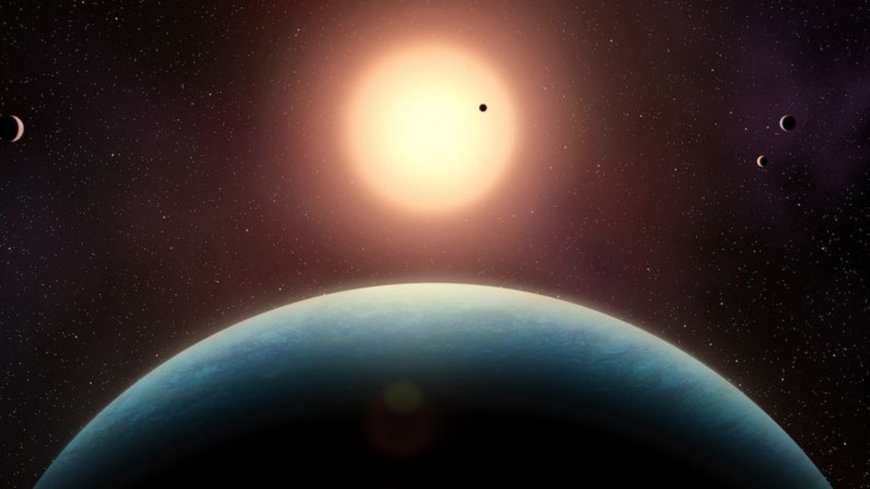Newly Discovered 'Super-Earth' Exoplanet 35 Light-Years Away Could Be Habitable
A super-Earth, L 98-59 f, has been found orbiting a red dwarf star 35 light-years away. It lies in the habitable zone, where conditions might support liquid water and potentially life. This discovery highlights the diversity of exoplanetary systems and the importance of studying habitable worlds around low-mass stars.

Five small exoplanets orbit closely around a red dwarf star called L 98-59, located 35 light-years away. A super-Earth, L 98-59 f, lies in the foreground of this illustration, believed to be within the habitable zone of its host star.
A fifth planet has been detected within the habitable zone of a neighboring star, where conditions could perhaps support liquid water and potentially life.
Located about 35 light-years from Earth, L 98-59 is a cool, dim red dwarf star already known to host a compact system of small, rocky planets. The latest discovery, led by researchers at the Université de Montréal's Trottier Institute for Research on Exoplanets, confirms the presence of L 98-59 f, a super-Earth with a minimum mass 2.8 times that of our planet.
The newly discovered exoplanet follows an almost perfectly circular 23-Earth-day orbit around its star. The world receives roughly the same amount of stellar energy as Earth, placing it in the star's habitable zone — a range of distances where liquid water could exist under suitable atmospheric conditions, according to a statement from the university.
\"Finding a temperate planet in such a compact system makes this discovery particularly exciting,\" Charles Cadieux, a postdoctoral researcher at the university and lead author of the study, said in the statement. \"It highlights the remarkable diversity of exoplanetary systems and strengthens the case for studying potentially habitable worlds around low-mass stars.\"
L 98-59 f was discovered by reanalyzing data from the European Southern Observatory's (ESO) HARPS (High Accuracy Radial velocity Planet Searcher) and ESPRESSO (Echelle Spectrograph for Rocky Exoplanet and Stable Spectroscopic Observations) spectrographs. Since the exoplanet doesn't transit, or pass in front of, its host star from our perspective, astronomers spotted it by tracking subtle shifts in the star's motion that are caused by the planet's gravitational pull.
By combining the spectrograph data with observations from NASA's TESS (Transiting Exoplanet Survey Satellite) and James Webb Space Telescope (JWST) — and using advanced techniques to filter out stellar noise — researchers were able to determine the size, mass and key properties of all five planets.
The study shows that L 98-59 b, the innermost planet, is just 84% the size of Earth and half its mass, making it one of the smallest exoplanets measured. Tidal forces may drive volcanic activity on the system's two innermost planets, while the third's unusually low density suggests it could be a water-rich world unlike any in our solar system. This diversity offers a rare opportunity to investigate the formation and evolution of planetary systems beyond our own, team members said.
\"These new results paint the most complete picture we've ever had of the fascinating L 98-59 system,\" Cadieux said. \"It's a powerful demonstration of what we can achieve by combining data from space telescopes and high-precision instruments on Earth, and it gives us key targets for future atmospheric studies with the James Webb Space Telescope.\"
Because L 98-59 is small and nearby, its planets are especially well-suited for follow-up atmospheric studies. If L 98-59 f has an atmosphere, telescopes like JWST may be able to detect water vapor, carbon dioxide — or even biosignatures.
The new study was published July 12 in the journal Earth and Planetary Astrophysics.
What's Your Reaction?
 Like
0
Like
0
 Dislike
0
Dislike
0
 Love
0
Love
0
 Funny
0
Funny
0
 Angry
0
Angry
0
 Sad
0
Sad
0
 Wow
0
Wow
0

























































































































































































